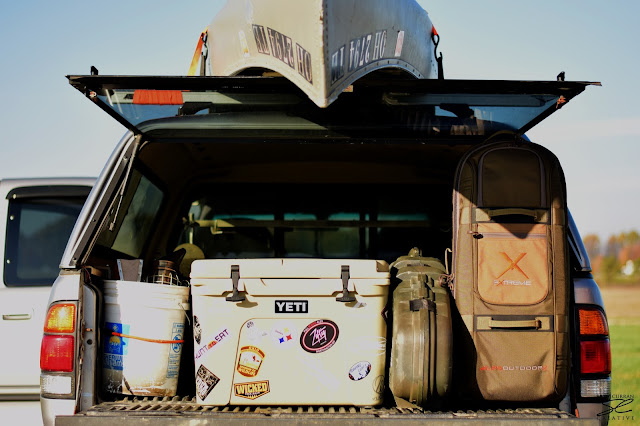The last few days of my deercation were the ones I was looking forward to the most. Since our college days, a group of us have been getting together at least once a year to hunt public land in southern Ohio. It all started many years ago with gun season, but quickly transitioned to spending more time together during bow season. We've been "keeping it public" long before "keeping it public" was cool, and our time at deer camp is something I truly look forward to every year.
A good deer camp has a magical way of letting friends pick up exactly where they left off. At camp we eat like kings, laugh until it hurts and make our time together an adventure. There's old war stories relived while new memories are being made. We wake up earlier, hike in farther, stay later and hunt harder than we do when we're all hunting separately back home... where ever each other's home hunting grounds may be. There are no trail cameras, no deer with names, no food plots and no corn piles. We review maps, supplemented with the latest apps to formulate ideas on new spots to hang and hunt. Then we mix in real-time boot leather, a dash of woodsmanship and a sprinkle of tribal knowledge to create our strategies. This recipe usually results in at least one or two good bucks taken at camp every year.
The first afternoon, Marc and I decided to put the venison vessel in the water and hunt "the swamp." Another quality all good deer camps share are names of specific places. In addition to "the swamp" there's places like "the secret spot" and "the horse farm" along with everybody's favorite, "the shit-stir." I could try to explain, but some things are better left a mystery. The swamp is accessed by boat so it doesn't see as much pressure as the other roadside walk in areas, although people do hunt it. It's public land in Ohio so chances are somebody is hunting it.
I dropped off Marc to hunt the top end then I ventured on, heading toward one of those predetermined way-points already pinned on my phone app. As the canoe quietly cut along the river channel, I must have jumped at least 50 wood ducks and a few mallards. The drake woods ducks looked amazing in the afternoon light. A short paddle later I pulled the boat ashore and diagnosed every tree in the vicinity of several well-worn trails. My stand was promptly hung among a selection with some cover and a favorable wind. I settled in for the afternoon hunt.
Not much happened until the last part of the evening when two does wandered in from behind my stand. They made themselves at home underneath me for quite a while, browsing away on everything green. Hoping a buck would soon follow I was stranding, bow in hand, release on my d-loop. Suddenly they both picked their heads up and looked to my left. I could hear the steps approaching but didn't want to move too quickly as the does were right beneath my feet. With my eyes strained to the left I could see another doe joining the party. Still optimistic that perhaps she would be luring a buck along I scanned the woods. No suitors in pursuit.
Now there were three does under my feet with shooting light fading. I continued surveying the area for a cruising buck while debating whether or not to take a shot at one of the does. It seemed as though they were going to be dining underneath me for a while, but my time was setting like the sun. The decision was made. As the largest of the three turned broadside the string was drawn back toward my face. Feet, grip, anchor, pin, follow. That mantra repeated thousands of times during practice becomes automatic in the moment.
The shot felt good, the arrow looked good, I felt certain I heard the deer crash after a short scramble through the brush. I paddled up to Marc and we returned to retrieve my deer. The trail was a short one and easy to follow. Just like you want. We recovered the doe within 50 yards of where my arrow passed through and stuck in the ground. Thanks was given, new memories were made and I was fulfilled.
















